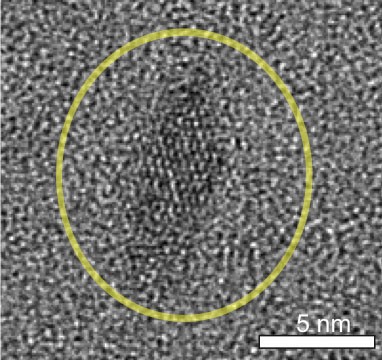Jun
8
A New Concept for an Old Chemical Process
June 8, 2012 | 1 Comment
Chemical reactions on the surface of metal oxides, such as titanium dioxide and zinc oxide, are in for a new look. Chemical reactions that change the oxidation state of molecules on the surface of metal oxides have been seen historically as a transfer solely of electrons. The new research shows that, at least in some reactions, the transfer process includes coupled electrons and protons.
That is key for a very wide range of new uses for metal oxides.
Coupling the transfer of electrons with the transfer of protons could help reduce the energy barriers to chemical reactions important in many technologies. The work also could prove important in finding more efficient ways to fuel vehicles of the future. Fuel cells, for example, transform atmospheric oxygen into water by adding both electrons and protons. Coupling those added electrons and protons could make fuel cells more efficient and allow replacement of costly materials such as platinum, solving the fuel cell’s major barrier to mass markets.
The best use would be hydrogen fuel cells efficient enough for use in automobiles followed closely by solar cells that would produce more electricity from the sun’s rays. Other applications could be photocatalytic chemical processes, including those designed for wastewater remediation or to create self-cleaning surfaces, such as the outside of buildings in areas with heavy industrial air pollution.
James Mayer, a UW chemistry professor said, “As we think about building a better energy future, we have to develop more efficient ways to convert chemical energy into electrical energy and vice versa.” The paper was published in the June 8 edition of Science.
On background Mayer explains, “Research and manufacturing have grown up around models in which electrons moved but not atoms. The new paper proposes a different model for certain kinds of processes, a perspective that could lead to new avenues of investigation. In principle this is a path toward more efficient energy utilization.”
Mayer said the goal of the work is to get those working in various technological areas involving metal oxides to think in different ways about how those technologies work and how to make them more efficient.
The UW research focused specifically on nanoparticles, the ones measured in billionths of a meter, of titanium dioxide and zinc oxide. Titanium dioxide is the most common white pigment, used in paints, coatings, plastics, sunscreen and other materials. Zinc oxide also is used in pigments, coatings and sunscreens, as well as white athletic tape, and also is used in the manufacture of rubber, concrete and other materials. Nanocrystals were used to closely examine chemical processes at the material’s surface.
Mayer said, “Chemical fuels are very useful, and they’re not going away. But how do we utilize them better in a non-fossil-fuel world?”
It seems like this work is research for further research, and that’s just the case. The journal Science has noticed the significance of this work and we should too as well as the whole metal oxide involved community.
For fuel cell catalysts moving from platinum to titanium dioxide would be an earthquake of cost significance – moving from thousands of dollars in materials cost to only pennies. That leaves a lot of room for the production of the proton and electron coupling metal oxide.
It’s quite unusual to see a science field suddenly opened far further than commonly thought just a day ago. Some acclaim is due the Washington group for the curiosity and forethought to find a new phenomenon. It’s ready for the replication attempts.
There is a lot of funding that goes wasted on nutball ideas. Then there are ideas that will reinvent industries. Who knows before it’s tried?
Comments
1 Comment so far



” Ti02 Photocatalysis Fundaments and Applications”
Ti02 Photocatalysis Fundaments and Applications “TiO2 Photocatalysis Fundaments and Applications”
Dr. A. Fujishima,
Dr. K Hashimoto,
Dr. T. Watanabe
University of Tokyo
Published by BKC, Inc. May 1999
Chiyoda-ku, Tokyo